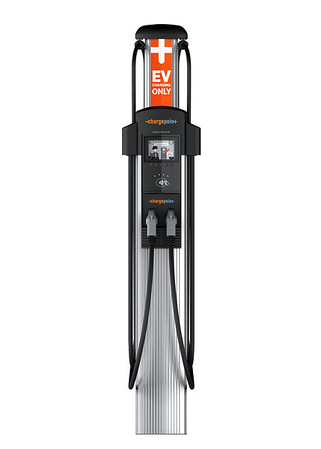Thank you, both of you, for the first replies. That was quick!

So that already seems like some amount of ChargePoint charging stations DO exist, that support more than 3.3kW. That's already a good sign.

Thanks again.
Maybe there's somebody who knows even more about this public charging station 6.6kW issue.
About the 2013 Nissan Leafs with 6.6kW: I have not seen anyone of them in the wild yet either, but I'm happy to have seen hundreds of them on cars.com already. In the beginning of February, there were maybe new 400 Leafs for sale still nationally, now it's more than 1500. That's a good sign as well. More and more new Leafs are rolling to the dealerships, and are available to the public, so for sale.
One more question: charging time - I already saw the "Nissan Leaf range chart" here on the forum. There it says, it takes about 5 minutes to charge a mile at a 3.3kW public charging station. So that's 12 miles gained per hour of charging. Nissan themselves say in the manual that it takes 7 hours to charge from "Low Battery Warning" (which is still far from "empty") to 100%. So combining the two calculations, that's 84 miles, that the Leaf can add in range, within those 7 hours (still with the 3.3kW charger, that is). Is this conclusion correct? Is the 12 miles gained per hour pretty realistic? Or is it not? I'm not referring to below-freezing temps, but more like 70F. Does the speed of miles added still vary, say, because charging from 0% to 30% or 80% to 100% adds less miles per hour of charge, than between 30% to 80%, because those are like the optimal charge levels, compared to f.e. from 80% to 100%? So it is sometimes 14miles an hour added, and sometimes 10miles an hour added? And I mean actual miles that can be driven, as calculated in the range chart. I am aware that the guess-o-meter can probably make big mileage jumps or only mildly increase the mileage displayed, just based on last driving behavior. So I can be pretty sure that, say, after a 1h rest-stop at a ChargePoint station at Chili's, I'm gonna have 12 miles of additional range, and not just, to use an example, just 5 additional miles?
Last newbie question for now: The Nissan sales person at the dealership told me, one can charge at any three prong outlet (with this trickle charge cable). Is that so? I am asking, because it says in Nissan's Leaf manual that it needs to be a regular outlet that indeed is on a separated electrical circuit, or something like that. I tried to ask the dealer: Is it possible that the outlet or the wiring might melt, that it can't handle the power the Leaf wants to draw through the trickle charge on an outlet. He didn't even understand, and just said again that one can charge at any outlet, it just takes very long with the trickle charge cable (I was aware of that part). So that means: Also when I'm visiting friends, I can just plug it in? I don't have to ask/make sure/inspect first, if it's a dedicated/separated circuit that I'm trying to plug into? It would be handy to be sure about this, because of the limited range.
Thank you once again for answering Newbie questions.




